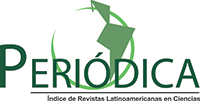Bullying among peers at school: a challenge for primary healthcare nurses
DOI:
https://doi.org/10.5216/ree.v15i3.24527Abstract
We often face questions regarding the nurses’ role and the pertinence of their work regarding school violence. Do nurses have the required preparation? Does nursing care encompass dealing with school violence?
Several elements are needed in order to answer those questions, including the need to contextualize nursing as a science and social practice capable of addressing the subjects’ needs, whether as individuals or groups. Nursing is also capable of establishing care within an epistemological approach committed to ethics, with the real relational encounter between the provider of care and those who receive it, with human empowerment and emancipation, and the evolution of societies(1-2).
It is, therefore, necessary to consider nurses’ relationship with society, and, in this particular case, with violence in its most various types and as a public health issue. Both relationships are, in fact, premises to act without naivety: there is a close and intimate connection to be established. Nevertheless, a gap is still noticed in the practice, research or education level, that calls for nurses’ commitment in view of the problem of violence that is increasingly more common within schools: violence through bullying. This situation requires health professionals, namely nurses, to establish a care dimension under the perspective of promoting individual and group health through interdisciplinary and intersectoral practice.
Thus, by establishing a practice connected and in line with primary health care, including the competencies and specificities of other fields, such as education, social work, psychology, and guided by activities of health promotion at school, through comprehensive care and health education, nurses can establish the means to work together to minimize and avoid bullying.
In this sense, nursing should work through the everyday practice, attitude and involvement of the team and services, considering the presence of the “other” in the health care environment, and in organizing and diversifying the forms of “me-other” interaction and in “broadening the horizons of knowledge and actions” in health, from an intersectoral and interdisciplinary perspective(3).
Nurses’ work and role in primary health care regarding the cases of bullying are established as a challenge within health units, when assisting children and adolescents, as well as outside the walls of the health unit. This work requires actions guided by health promotion, the development of educational practices in health, identifying signs and symptoms of violence and the consequent health needs, contributing with the education of health and education professionals, involve students, educators and families and focusing on children and adolescents.
We highlight that every work developed in the school should consider it as a space for pedagogy and preparation, one that comprises the potentialities for health promotion and also the solution of the identified problems. Health education actions in this field are capable of intervening in bullying and avoiding it, therefore, it is also a concern for nursing. Those education actions have been built by establishing connections, knowledge and complementary dimensions between health actions, thinking and everyday living(4).
To do this, nurses should develop health education practices that overcome the already existing traditional practices, which remain outlined by concepts focused on the biomedical model and on an individual practice, responding their discourses, strengthening political and economical interests hindering the development of an active subject who participated in group processes(5-6).
In summary, the healthcare model that nurses must construct in view of violence and bullying at school requires professionals that broaden their knowledge and contribute with the production of scientific knowledge regarding violence at school. In this motion we must take hold of new theories and practices, and, at school, which is a feasible place for professional, intersectoral and collaborative practice, (re)build a model of child and adolescent to avoids and minimize bullying. Thus we would meet the challenge and ethical commitment of ensuring equity, protection and a life with more quality for children and adolescents.
REFERENCES
1. Mishima SM, Fortuna CM, Scochi CGS, Pereira MJB, Lima RAG, Matumoto S. Maria Cecília Puntel de Almeida: a trajetória de uma protagonista da enfermagem brasileira. Texto Contexto Enferm [Internet]. 2009 [acesso em: 30 set 2013];18(4):773-80. Disponível em: http://dx.doi.org/10.1590/S0104-07072009000400020.
2. Silva MJP. Nursing Science. Acta paul. enferm. [Internet]. 2012 [acesso em: 30 set 2013];25(4):i-ii. Disponível em: http://dx.doi.org/10.1590/S0103-21002012000400001.
3. Ayres JRCM. Cuidado e reconstrução das práticas de Saúde. Interface (Botucatu) [Internet]. 2004 [acesso em: 30 set 2013];8(4):73-92. Disponível em: http://dx.doi.org/10.1590/S1414-32832004000100005.
4. Vasconcelos EM. Educação popular e a atenção à saúde da família. 3a ed. São Paulo: Hucitec, 2006.
5. Colomé JS, Oliveira DLLC. Educação em saúde: por quem e para quem? A visão de estudantes de graduação em enfermagem. Texto Contexto Enferm [Internet]. 2012 [acesso em: 30 set 2013];21(1):177-84. Disponível em: http://dx.doi.org/10.1590/S0104-07072012000100020.
6. Renovato RD, Bagnato MHS. Práticas educativas em saúde e a constituição de sujeitos ativos. Texto Contexto Enferm [Internet]. 2010 [acesso em: 30 set 2013];19(3):554-62. Disponível em: http://dx.doi.org/10.1590/S0104-07072010000300018.














